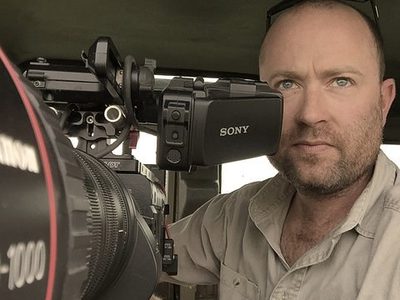

The life of a wildlife film maker
During the first lockdown Far and Wild hosted numerous online chats with a handful of interesting folk. Nick Ball, wildlife photographer and documentary cameraman who’s filmed for the BBC, Nat Geo Wild, Discovery Channel and Animal Planet (to name just a few) was one of these people. Read on to learn all about his exploits, favourite wildlife to photograph and where his favourite places are in Africa…
How best do you describe your job and how did you get in to the industry?
I’m a wildlife documentary cameraman and have been filming for over 10 years, specialising in the African continent. After completing a degree in Zoology and an MSc in African Mammals, I decided to pursue and combine my two passions, wildlife and photography. I started as an assistant cameraman based in South Africa, with my first shoot spent filming lions for 3 months in the wilderness. It was a long shoot, but wonderful to spend so much time in one location – and I was a lot younger then!
What is your favourite part of Africa and why?
I’ve always had a soft spot for Moremi, Savuti and Khwai in Botswana. These areas were some of the first areas we explored as a family, over 20 years ago. Since these self-sufficient and fully independent trips, I’ve been fortunate to spend many occasions filming there, and have also managed to experience some of the more exclusive lodges of this region in Botswana. Apart from the nostalgia, this region of Botswana is fantastic for wildlife and has a feeling of ‘real’ Africa.
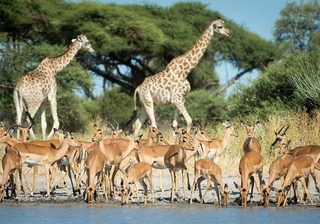
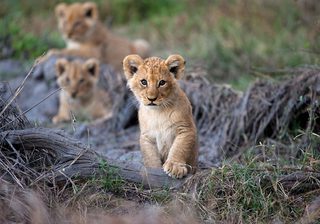
How does Botswana compare to other safari destinations in Africa?
Having travelled to much of Africa, I feel qualified to give some idea of where Botswana is positioned as a safari destination. For me, a Botswana safari is unrivalled. With a reputation for high-end and exclusive wildlife viewing with world-class accommodation and service, Botswana definitely ticks the quality box. But a trip to Botswana need not be extortionately expensive. As amazing as it is to indulge in the luxury of eating a perfectly cooked soufflé in a 5-star lodge after a well-paired steak and glass of red wine, my favourite memories of Botswana are arriving at a remote camp-site, knowing you’re the only people there for many miles and preparing for a night under the stars surrounded by some of the world’s best wildlife separated by only a sheet of canvas.
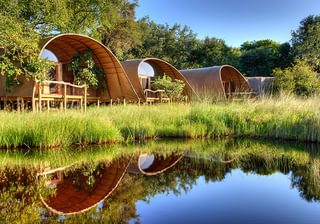
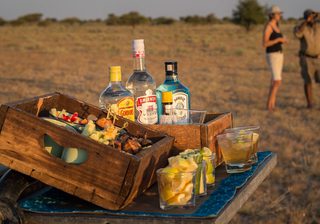
What was your most memorable experience filming in Botswana?

It’s difficult to put my finger on one most memorable moment whilst filming in Botswana, as there are so many! But I can say that any time spent with spotted hyenas is, for me, as good as it gets. They’re charismatic, mysterious, endearing, cheeky and inquisitive, making for some extremely entertaining viewing. Botswana is an excellent destination for all the well-known apex predators, but especially good for hyenas too. If you’re lucky you may even spot the much rarer and elusive brown hyena – Botswana is one of the last remaining strongholds for them.
What is your favourite animal to film?
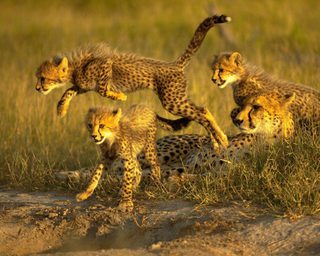
I love filming cheetahs. I’ve filmed cheetahs all over Africa, and they’re really special to spend time with and delve into their world. Thankfully, they’re most active during the day. And when they are active, it’s normally some good action, albeit a little gruesome sometimes. They really are extremely photogenic animals, making my life easy when composing pretty portraits but, in contrast to this, they’re probably one of the most challenging big cats to film hunting. Their speed and ability to turn ‘on a sixpence’ makes them extremely difficult to film when hunting, but very rewarding when the drama pays-off.
What is the most challenging part of filming in Botswana?
Aside from restraining myself from the incredible food, produce and sundowners in Botswana the most challenging part can often be remembering to film it rather than sit there and watch. The wildlife interactions are often so magical you get caught up in the moment. Sometimes it’s nice to sit and spectate rather than see it through a lens.
What would you say is Botswana’s biggest wildlife success story?
Botswana’s political past has, for the most part, been a relative success story. As a peace-loving country with no history of civil war, Botswana has stuck out as a safe country to visit, with its head screwed on with regard to its wildlife. Botswana acknowledges its unparalleled natural beauty, abundant wildlife and thriving tourism industry, and it’s made moves to keep this at the forefront of their economy. Scientists from all over the world have set up conservation and research projects in Botswana, with many success stories to choose from. One project which sticks out for me is ‘Rhinos Without Borders’, a project I filmed in partnership between South Africa and Botswana, transporting rhinos from the highly-targeted national parks and reserves in South Africa. Botswana has been chosen as a safe haven and trusted custodian for the highly endangered white rhinos – and that’s an accolade worth commending.
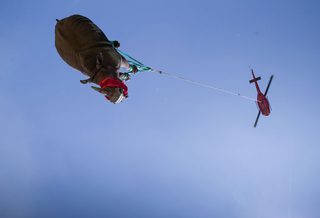
Has Nick’s wildlife photography journey inspired you, making you wistfully dream about being some where far and wild, deep in the heart of Africa? If so, simply get in touch – we’re experts at creating the perfect tailor-made safari helping you realise those bucket-list ambitions and turning them into unforgettable experiences.































